Older Five & Younger Six years
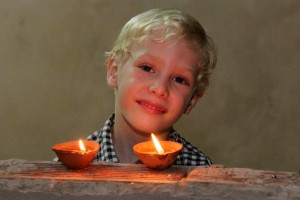 Background: The Gesell Institute of Child Development has observed that children go through a repeating sequence of six different stages with predictable changes in mood and behaviour in each. Older Five to Younger Six Years is one stage which crosses two ages, lasting from Five-and-a-half until Six and three to six months. The behaviour observed in these different stages reflects qualities associated with the planets – in this stage with Mercury. The developmental traits in these profiles represent only one aspect of children’s behaviour and may be masked, modified or intensified by other factors, both individual and environmental, such as temperament, gender related behaviours, high stress levels, over-stimulation, too much screen time or organic problems.
Background: The Gesell Institute of Child Development has observed that children go through a repeating sequence of six different stages with predictable changes in mood and behaviour in each. Older Five to Younger Six Years is one stage which crosses two ages, lasting from Five-and-a-half until Six and three to six months. The behaviour observed in these different stages reflects qualities associated with the planets – in this stage with Mercury. The developmental traits in these profiles represent only one aspect of children’s behaviour and may be masked, modified or intensified by other factors, both individual and environmental, such as temperament, gender related behaviours, high stress levels, over-stimulation, too much screen time or organic problems.
Note: If your child has only just turned this age and shows none of these behaviours, please read the previous age level, or just wait a few months, then read this again!
These profiles integrate the wonderful descriptions from the Gesell Institute of Child Development research, and the ideas of Rudolf Steiner into my own research. Direct quotations from the Gesell Institute’s books are in ‘single quote marks’.
View/download as pdf Older five & Younger six
Five & a half years to Six & 3-6 months
A stage with Mercury qualities
In Older Fives and Younger Six Years we see qualities and motivations traditionally associated with Mercury: the importance to children of freedom, movement and independence; a warm sociability and communicativeness; an enthusiastic interest in the world, making them reluctant to have to choose—for they want it all; and we find them in the midst of a certain chaos! Compared to the relatively peaceful Moon qualities of the Younger Fives, this next stage is a volatile, challenging time in childhood and therefore more space is given here to describing it and bringing some understanding to it.
Older Fives and Younger Sixes, at their best, shine with an enthusiasm which is contagious, as they smile, laugh and fairly dance with joy; they love to question and learn about the world, to show off what they have learnt; they love new adventures, new games, new ideas. Gesell describes them as active, supple, sensitive and alert and they react with their whole action system’. They are, characteristically, openly affectionate and warm, and admiring of their friends
The Mercurial mood of this stage is complicated by other growth factors relating to the will. At this age the emphasis in physical growth is well established in the limbs, lower abdomen and metabolic system, which are all associated with the power of the will (will power). Development of all aspects of the will are evident in these years, from learning about initiative, perseverance, and completion of tasks, to moderation of responses and experiencing independence and autonomy –all of which give the child a sense of their own power and control.
Children this age learn best about all these aspects of the will by imitation and doing. Their thinking is still concrete and animistic. They need encouragement and opportunities for creative play and to work with you. They need will-filled action, activities which offer resistance and the challenge of weight and gravity: pushing, pulling, stirring, kneading, pounding, hammering, sawing, grinding, beating; for children needing bigger challenges: lifting logs in cubby building, hauling buckets up with pulley systems, digging the earth with camping shovels, carrying bricks and firewood and shopping bags. This should not, of course, be “forced action” but needs to come out of the joy of being useful and/or creative.
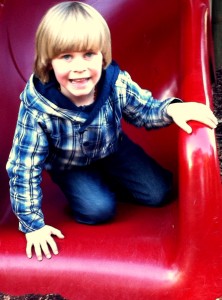
So at Five and a half into Six, there is an interesting mix: the children now have new experiences in power (will power) and also the need for freedom (Mercury). The children have a fierce independence, driven by the developing will, and also Mercury’s enthusiastic interest in everything, which leads to ‘wanting it all’, while their will is still only under very crude control. This brings new challenges and opportunities. The children’s behaviour may show extremes, while also reflecting struggles with all the aspects of the will process: being clear about one’s own wishes and intentions, decision making, initiating tasks, smooth carry-through of the task and bringing it to a conclusion. In addition, they still do not have the ability to prioritise, to moderate impulses or to accept the limitations imposed by their own choices. By Six, their new experience of power, independence and a sense of freedom leads to them wanting to control everything.
Emotionally the children of this age may seem to be in an almost constant state of tension. Fortunately for teachers and schools in general, most are calmer at school than at home. The children may explode with frustration; they are described by Gesell as being ‘brash’ and ‘combative’; they find it hard to stop an explosion or sulk or burst of tears once it has begun; tantrums can occur again. Their struggles with control over their increasingly strong will, and the intense feelings and contrariness it brings, can also be seen in other descriptions by Gesell— that they are ‘impulsive, volatile, dogmatic, compulsive and excitable’. They react in more extreme ways; ‘they try on and throw off moods, using body posture, gesture and speech to give expressions to emotions and ideas’’; they may ‘cry copiously when unhappy and kick and shake with their grief’. One mother commented: “At first it felt almost artificial, the bigness and suddenness of her reactions, just like she was two again, but I soon realised it was real and overwhelming to her. She fell into it and was overrun by it and then she just needed her Mummy all over again. She wanted to be held, silently comforted and then would just as suddenly be ready to pick herself up and move on; she didn’t need to talk about it, it was over.” So they are actually much more vulnerable and sensitive emotionally than their more challenging behaviours might suggest. When things start to go really wrong, they may also act as if they are impervious to punishment, while what they need most is more understanding of their inner conflicts and more protection from over-stimulation.
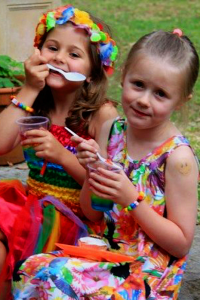
Behaviour tending to the extreme is typical– their emotional responses seem to be paradoxical- yes/no, fast/ slow, I love you/ I hate you. From Five-and-a-half, children are characteristically hesitant, dawdling, indecisive, or over-demanding and explosive. They may be extremely shy one minute, then extremely bold the next; very affectionate, and then almost without warning very antagonistic. On the one hand, they have a tendency to bolt in and out, to slam, to let forth with brash, aggressive outbursts (“You idiot!”) and to release explosive attacks upon situations; they also show intense concentrations and abrupt endings. They attempt things which are too hard for them. ‘They are still inexpert in social relationships and can be “very good” and “very bad” with the baby.’ Six is also stubborn. ‘It is hard for him to make up his mind about big things, but once made up it is hard to change. About small things he does change rapidly.’ All this is challenging both for the children and for those who love and care for them.
Gesell researchers also describe this age as extremely ambivalent, doing one thing but able, and wanting to do the opposite and yet completely unable to choose. “I want and I don’t want to” said one little girl when asked at a party why she didn’t go to the table and get herself a cookie. Gesell also sees Six’s frequent reversals of letters and numbers as an example of Six’s oppositeness and reversals.
So children of this age find it difficult to choose. More precisely, the child does not want to choose at all, for they want it all; they do not want to miss out on anything; their expanding interest makes everything interesting and preferable, so that it seems to the adult that the child sees the grass is always greener on the other side. If the children choose one thing, they may then want the other. This is not a time to give children too much choice. It is better for parents to try to structure something to be done as an accepted fact so that there is no hint of choice (and then deal with any demand for choice if it should occur.) For example, avoid a question like “Do you want the red or the blue hat” but try to state a fact or indirect suggestion as in “Today is a day for red hats!” For poor Six may regret a decision even after it is made.
If we cannot re-frame situations so that the decisions made are not either/or decisions, then it may help to teach them about prioritising of choices. ‘This one today, that one tomorrow.’ We may need to help the children feel that they are not going to miss out altogether on a choice, though they may have to wait a bit longer to get another option. Even acknowledging their feelings might help sometimes. “I know you feel disappointed that you cannot do both but it just cannot happen today.”
None of this is easy, for in their need for freedom and independence, they certainly don’t want you to decide for them. If they even sense an unexpressed preference in the parent in the most troubled times it may make them choose the opposite whether they want it or nor. It is not surprising that they go to extremes under slight stress, whenever they attempt to use their new powers.
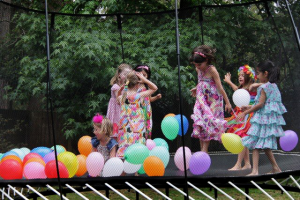
A characteristic in Older Five and Younger Six consistent with Mercury qualities is their need for constant movement, their restlessness, clumsiness and decrease in bodily control. The calm composure of Five Years is gone. It becomes increasingly difficult for them to sit still for long periods. Gesell describes this restlessness:
The child plays indoors or outdoors and sometimes doesn’t seem to know which place he wants to be. …Even while seated the child wriggles and bounces in his chair, sits on the edge, may even fall off…. they would “fall over a piece of string.” He seems to be consciously balancing his body in space. He is everywhere—climbing trees, crawling over, under and about his large block structures. He seems to be all legs and arms as he dances about a room, and his coordination is not always good….he touches, handles and explores everything in sight but there is often more activity than accomplishment.
Channelling of the children’s need for movement into constructive movement activities will help more than chastisement for behaviour, much of which is very difficult for the child to control. It is more helpful to find ways to go with the movement rather than against it by trying to stop it. Give the movement something to do! This is the imaginative task of the adult! Planning for times of healthy movement can help, for example giving sufficient time for big free play and outside play; time for being helpful with everyday tasks; dance and music might contain and direct the movement; finger movement songs and nursery rhymes, with their rhyme and repetition might bring centeredness and calm while still allowing movement; crafts such as finger knitting, and modelling clay, biscuit dough and marzipan can give fiddly fingers something to work creatively with indoors; and of course, drawing and painting allow artistic expression through more refined movement. Sometimes passive rhythmic movement like swinging gently in a hammock or on a swing with long ropes can be soothing. However the jerky, “brain shaking” movement created by some new public play equipment probably does not help, neither does the passive watching in screen time, for it bottles up the movement and creates an even greater need for movement afterwards which can manifest in hyperactivity.
It is interesting that Mercury is asymmetrical; this may shed light on the sudden clumsiness in the children’s movement and coordination at this age. While Younger Fives may be able to walk backwards and skip, Older Fives-Young Sixes might have more difficulty bringing their bodies into a rhythm because they may be more arrhythmic. A swing provides the rhythm for them. One mother described how this helped her Younger Six: “When she needed a rest, or was overstimulated after a day of school she would go and swing herself in the swing or lie swinging in the hammock, for ages! Sometimes singing but often just quietly swinging, still in movement, until she was ready to leap up and into activity again.” This also illustrates how, when children have the time and space, and when their needs are being met, they have a wonderful capacity to choose what they need. Our children may show real wisdom in this and we can learn from it if we can just listen and observe them well.
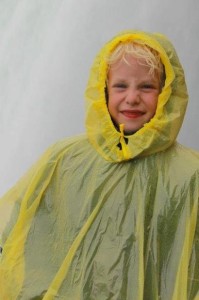
This need for movement is also seen in their need to talk, for Six, even more, loves talk and conversation, again true to Mercury. Creating special times for children to tell their stories (and to be really listened to) helps this. Having family meal times offers ideal opportunities for children to share their stories of the day as well as learn to listen to others. Hopefully the taking turns (for parents share too) also leaves time for eating! Special times, what I call, “sacred times”, for each individual child to share with the parent alone not only provides “talking and being listened to” time but also builds relationships in a busy world where, if such times are not deliberately made, they often do not happen at all. Bed time is good for this. If the bed times allow a later time (by maybe 15 minutes per year) for each age child, it can accommodate such special times with each child.
Another characteristic of this age is that there is a certain chaos entering into everything. Gesell described this age as complex and confused, highly undifferentiated—everything is everywhere, their organisation is breaking up, their reality is often shattered. What is characteristically Mercurial in this, is that the children may seem to enjoy this. The child of this age may voluntarily and experimentally cross his eyes when he doesn’t understand something, when he is surprised or when he wants to be silly. This chaotic quality is illustrated by Gesell’s evocative description of Younger Sixes’ parties, which, if not carefully planned to be otherwise, are likely to be characterised by: ‘high pressure activities, pouncing on presents, excited exchange of favours, everyone expecting first prize, bubbling bravados, scrambles, hullabaloo, with interludes of silence induced by ice cream.’ It is no surprise that Mercurial Older Five/Younger Six loves parties but it is wise to keep the numbers low!
It is also not surprising that nervous tension shows in the children at this time. This tendency to chaos, along with their enthusiastic wanting it all, but being unable to decide, all make this age very stressful developmentally. Children need protection here, even from their own inclinations sometimes. If even more demands are made on children— with organised outside activities, too many social activities (even if they are asked for by the child) or school homework (such unfortunate demands are made on this age in some places)— the child will certainly be overloaded. Their response to overload may be organic, in illness, or in difficult behaviours, which are really cries for help. What adults call misbehaviour and disobedience is usually a sign that a child’s needs are not being met or understood. Children desperately need their beloved adults to keep life nurturing and simple at such times. (See the Simplicity Parenting book or website for more on this).
Another potent challenge at this age is that it is also a time developmentally for self-centredness. Where mothers were the centre of the universe at Younger Five, now it is the children themselves at the centre of their world. They want to be first and loved best, to win and have the most of everything. They want to be free and independent and do not want to be told what to do. But this can make them quarrelsome, aggressive, resistant and disobedient, defiant through their dawdling. They do not make themselves popular in the family when they manifest the more negative qualities of this age (and of Mercury too): restlessness, criticalness, meddlesomeness, clumsiness, indecisiveness, excitableness, worrisome-ness, over-talkativeness! But all these are also indications they need some calming help. Even something simple, like a lavender oil foot massage, given by parent quietly and lovingly before bed, can make a big difference; it can provide the quiet attention the child yearns for, with the calming therapeutic effect of lavender on the nervous system.
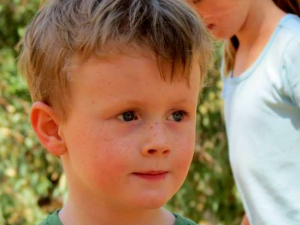
Thus children of this age seem to need to stand very strongly in the face of the world; they appear very egotistical and power hungry; they brag and boast and say they know it all; they correct those around them, tell them how to do things. They want to do things they are not really ready to manage. Anyone who threatens this new sense of themselves as competent doers or tries to thwart, criticise or challenge them can be viciously attacked or stubbornly resisted. This is about survival for them, to hang on to this precious new fragile sense of their own will power and competence, and to the freedom to move and act. This burgeoning new will-filled and freedom-loving self needs respect. To directly confront them will often push them into a corner and force them to fight back more stubbornly than ever. It is more effective, sometimes, well after the event, to gently and indirectly help the children to see what they need to do to develop their power over themselves. How can this be done?
There are ways. For example, it can be useful to speak to children of “taming the dragon” (of anger for example). Such language separates (through images) the child’s “best shining self” (the good striving self) from his or her little dragons (the out of control, untransformed self). With such images one can talk with more objectivity about whether the dragon was helpful, or not, or whether the dragon needs help from the child’s better self—perhaps a little time to cool down, or a little help to pick some flowers to mend a hurt they caused in someone else. Done in the right way, this can be used to help the child take responsibility for their behaviour without their getting defensive or feeling blamed. They may even enjoy the idea of being “the boss of the dragon”! After all they love to boss about and chastise their patient loving dolls, who never answer back.
Children can also be helped by simple environmental supports that we give them like good routines and daily rhythms to build predictability into their unpredictable world. When daily routines are the same and predictable, we do not have to fight all the way to get a dozen things done, we just have to find ways to get the routine started. Their bodies need regular bed times, regular eating times, and a relatively calm environment when eating. For this they need time; they need warnings because they do not find transitions from one activity to another easy. They do not like being interrupted. Magic counting (1-2-3-4-5-) can help them to change activities by giving time for transition. Respect for their activities and what is important to them helps to teach them respect for our activities and what is important to us. They are beginning to respect a fair trade.
For more on environmental supports see Avoiding trouble with young children
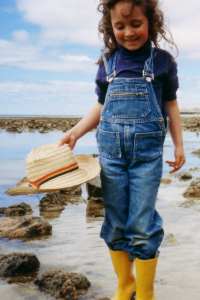
So much comes back on us the adults, ultimately. It is also we adults who have to learn to take a deep breath, to count to ten, to hold back reactions, to not take personally the child’s threat to adult authority and power, to respond firmly, respectfully and preventatively, with all the understanding we can muster for these powerful little people. The children will need every bit of this new will they are developing to meet what will be demanded of them in the world in the future. They will also need us to help them gradually take hold of these new powers in themselves and to use them respectfully, compassionately and wisely in the world. This is not about letting children tyrannise us. But it is about not letting their burgeoning will threaten us into tyrannising them! It is also up to the adult to find their own peace within the storm, to hold a quiet adult centred-ness amongst the child’s chaos, self-centredness, movement, bossiness and clumsiness. We need to model what we want them to learn, and affirm the best in them so they can believe in themselves.
In this age, the children’s struggle to take hold of the will is central to their challenges, in the alternations of boldness with dawdling, with getting started and stopping, with making and sticking to decisions. If Mercury influences are adding to the mix, with an enthusiastic drive to have it all, it is not an easy situation for a child with, as yet, still maturing capacities to moderate and prioritise, for self-control, and for decision making. All this effort and their wish to be independent makes them anxious and tense. They still worry their mother might get sick or die, or won’t be there for them. They know they depend on their parents, yet on another level their wish for freedom means they also wish they did not have to depend on them. This inner conflict perhaps aggravates their extreme responses, one minute they say they love them, the next minute they say they hate them.
It is not surprising that Older Fives and Younger Sixes are prone to illness and have many tensional outlets. In health, at Five-and-a-half and Six signs of a breakup appear as well. The almost predictably healthy Younger Five year olds now suddenly have many colds, headaches, earaches, stomach aches. Or their feet hurt, their faces hurt. They may even revert to toileting accidents when they are over excited. Consistent with Mercury influences, all the mucous membranes seem more sensitive and more easily inflamed than at other ages; Gesell notes: ‘eyes may be red and there may be sties. In girls genitalia may become reddened…; nose and throat membranes seem much more sensitive than at other ages. Otitis media (inflammation of the inner ear) again reaches a peak, as it did earlier at Two-and-a-half. The child complains of being too hot and perspires easily… Allergy responses are high.’ There is also an increase in tensional outlets—many hand to mouth gestures, chewing on loose clothing, biting or tapping a pencil.
The children at this age may also be awakening distressed at night with nightmares, night terrors. This developmental behaviour used to peak at six years. One mother described what helped her child with this: ‘I would speak in a calm, almost passionless voice of her home and family, “the moon is shining on the roof of our house, the chickens are fast asleep, the dog is curled up in his bed, your brother is sleeping in his bed, your sister is dreaming in her bed; all is well, all is good.” I guess this is where her anxiety and tension manifested and just that reassurance that all was well and the same and good was enough. She never remembered it in the morning.’
When children watch programmes like the news, or movies far beyond their years in relation to violence and fear-producing content, bad dreams may be intensified. Children still need to be protected from unnecessary exposure to anger, scary situations, violence and disasters in the news and even from deep sadness. Even music in a minor key can affect young children and they sometimes respond by putting their hands over their ears. When disturbing elements in a story are told objectively, that is, not dramatically it will have less effect on the child. When it is inevitable that a child will be affected by shared deep feelings such as the sadness at the death of a loved one, it helps children to also bring a positive picture of what human growing is about…that in every death is a new beginning and that we will be working to eventually take hold of our sadness and go on with new living, when we have let our sadness out a little. In this we model for them how we use our will and courage to meet the difficult challenges in our lives and that we do not need to be victims of our fate.
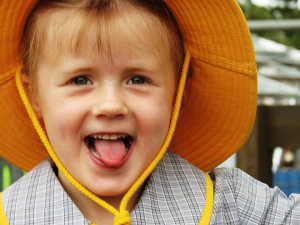
Children in this stage have a growing sense of what is “good” and what is “bad”, (in this case “good” and “bad” usually being defined by the child’s adult authorities) mostly with a far greater idea of what is “bad” than “good”; it is typical of children around Six to come home and want to tell of all the “bad” things another child did at school. It is this growing moral sense which is nourished by the fairy tales and stories which plainly outline that bad is punished and good is rewarded, that provides a feeling of safety in the world for the child, even though as adults we know life is not so simple. They need to know the world is a beautiful place first, to build inner strength in a place of safety. The time will come to know the harsher realities of the world later. Nevertheless there is definitely a developmental readiness at around Six to start to work with the idea of transforming and taming the behaviours (their little ‘dragons’) which are inappropriate, hurtful or unhelpful and which come from our lower nature, and working to draw out their desire to be good and true (their best ‘shining selves’). It is hard sometimes to believe that the child of this age wants to be good behind all that confused defiance and self-centeredness. Perhaps it helps to remind ourselves that research shows we are essentially social beings and want to do what is also best for others. We do want beauty, goodness and truth. Then we can again try to draw the goodness out of our children by our belief in them.
There is one final characteristic of children around six to be mentioned particularly because it can be disturbing for adults to deal with! As the emphasis in growth moves towards the lower part of the trunk, children become more and more curious about the genitals and orifices of elimination. This is a healthy developmental curiosity. They find elimination humour hilarious, may pretend to “pee” in your lap, may peep under toilet doors, under women’s skirts and find every excuse to examine each other by playing doctors, babies or just looking. Most people have memories of this, because children sense these things are somehow taboo. It is this sensing the societal taboo on genital play which makes them often shut the door to do it! Children can even imitate adult sexual behaviour, which they call “sexing” and usually understand to mean ‘rolling around on top of each other’.
Now is the time to clearly speak of the wisdom of the body in excretory processes and to re-state the rules about respect for privacy and touching people’s “private parts”. This is less for concern about what the children of similar age innocently do to each other than protecting them against sexual abuse by older people, including older children. Sensuous children are particularly at risk here; for them the need to develop strong personal boundaries should be emphasised even more. However, please note! If children are partaking in sexual penetration or oral play with genitals it should be investigated carefully in case there is sexual abuse happening either with the children involved or further up the line of imitation. Such play does not usually arise just out of developmental curiosity. We as parents are responsible to teach our children these rules around privacy. It is the task of educational authorities to support parents in this. More is said of children’s unfolding sexuality and the need for clear boundaries in the article Developing sexuality and the prevention of sexual abuse in young children.
So, Older Five and Younger Six is a challenging age at times, complicated by the wonderful but sometimes chaotic Mercury qualities and growing wilfulness in the children. Yet they will be stronger for, and enriched by, the experience of the sociability, and intense enthusiasm and curiosity about the world, that this age offers. We can see where these sometimes awkward beginnings in childhood can lead in mature adults with strong Mercury qualities: bringing their love of people, their social perceptiveness, negotiating and facilitating skills into their work and home communities to make the world a happier, more welcoming place. By Six and a half, new control and equilibrium allows the beautiful qualities associated with Venus to be seen.
View/download as pdf Older five & Younger six
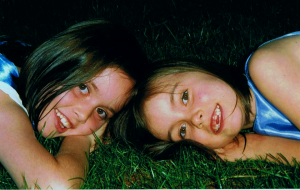
Further reading
Bates Ames, Louise, and Ilg, Frances L. Your Five Year Old. Sunny and Serene ( A Dell Paperback, New York, 1979) A Gesell Institute of Child Development Book. Contains good information about readiness and un-readiness for Kindergarten.
Bates Ames, Louise, & Ilg, Frances L. Your Six Year Old Loving and Defiant (A Dell Paperback, New York, 1979) A Gesell Institute of Child Development Book. Contains good information about readiness and un-readiness for school.
Payne, Kim John, with Lisa M. Ross Simplicity Parenting Using the Extraordinary Power of Less to Raise Calmer, Happier and More Secure kids (Ballantine Books Trade Paperbacks, New York, 2009) Or visit their website www.simplicityparenting.com
See also
Avoiding trouble with young children
Strategies for stressful times checklist
Healthy play
Developing sexuality and the prevention of sexual abuse in young children
Brief descriptions of the planetary qualities